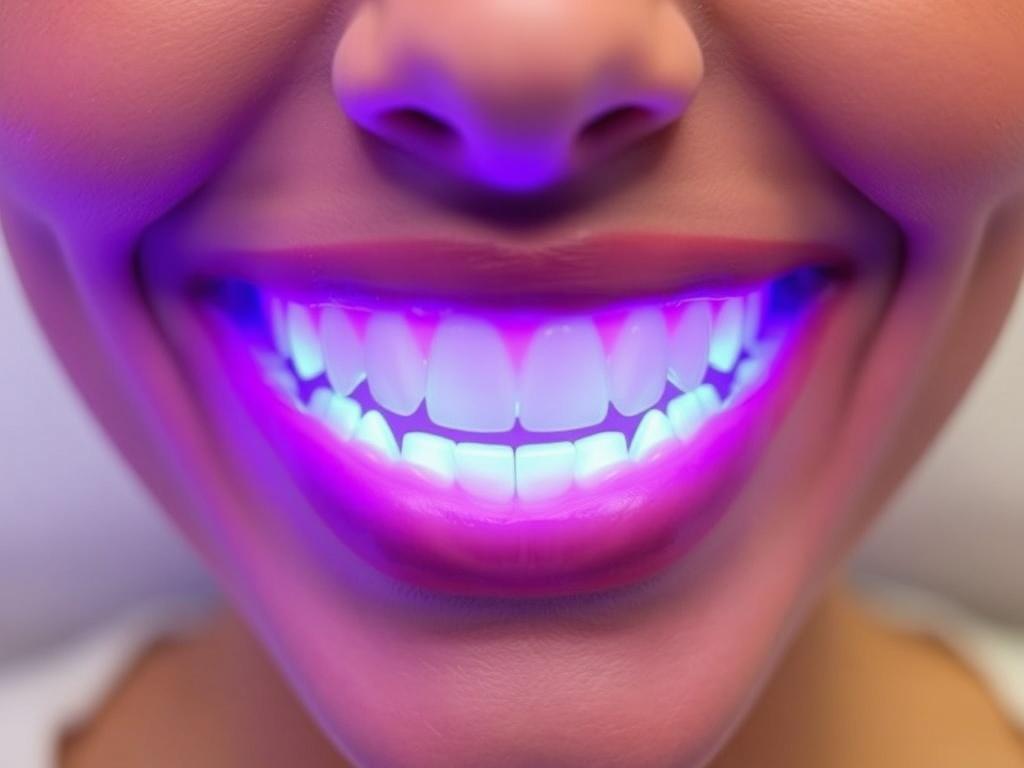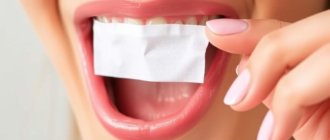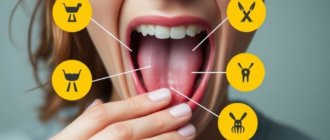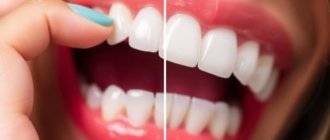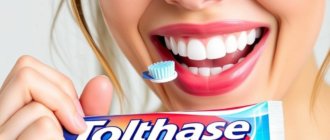When it comes to achieving a dazzling smile, many people turn to various teeth whitening methods hoping to shed the stains and discoloration that come with age, coffee, or smoking. Over the past decade, one popular trend has been LED teeth whitening. You might have seen it advertised on social media, in dental offices, or even as at-home kits promising bright, white teeth in a short amount of time. But the question remains: does LED teeth whitening really work? In this article, we’ll explore what this process entails, how it works, its effectiveness, safety considerations, and how it compares to other whitening methods.
Содержание
- 1 What Is LED Teeth Whitening?
- 2 How Does LED Teeth Whitening Work at Home?
- 3 Professional LED Teeth Whitening: What to Expect
- 4 Are There Risks or Side Effects?
- 5 Comparing LED Whitening with Other Teeth Whitening Methods
- 6 Tips for Maximizing LED Teeth Whitening Results
- 7 Who Should Consider LED Teeth Whitening?
- 8 Cost of LED Teeth Whitening: Is It Worth It?
- 9 Final Thoughts: Does LED Teeth Whitening Work?
What Is LED Teeth Whitening?
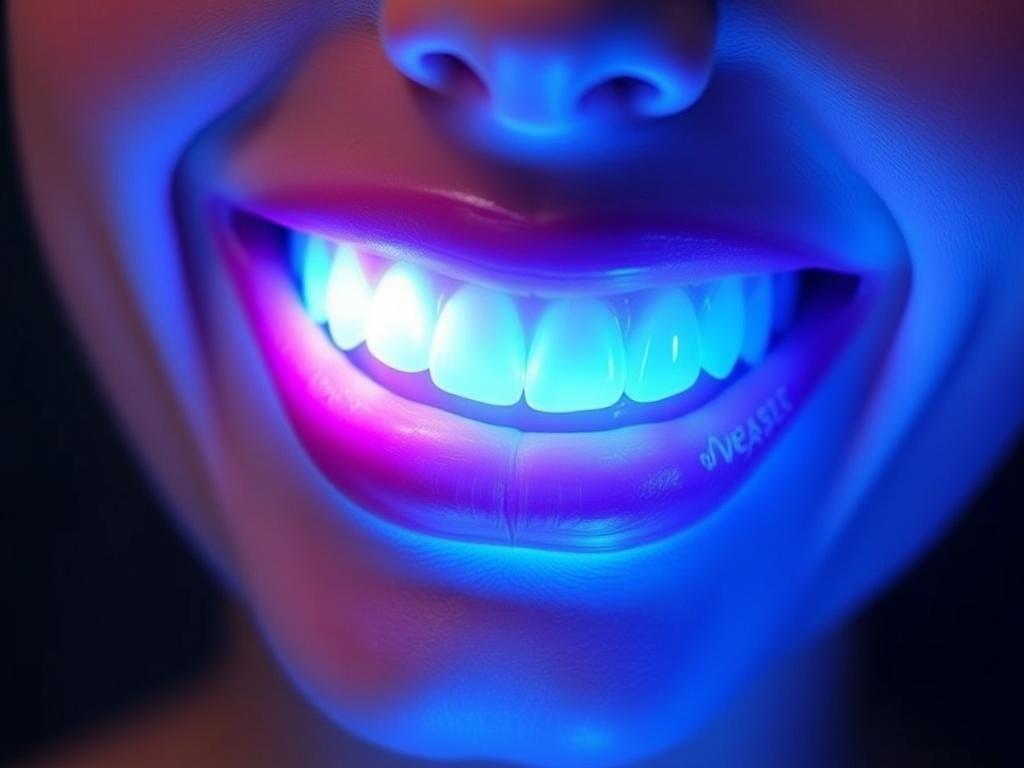
LED teeth whitening involves applying a whitening agent, typically a gel containing hydrogen peroxide or carbamide peroxide, to your teeth. After applying the gel, an LED light is shone onto the teeth to supposedly accelerate the whitening process. The LED light is usually cool in temperature and emits a specific wavelength which is thought to activate the whitening gel, helping break down stains faster.
This method comes in two main forms: one is professional LED whitening performed in dental offices, and the other is at-home kits that contain an LED light device along with the whitening gel. The convenience of the at-home kits makes them popular, but this has also sparked debate about how effective they actually are compared to professional treatments.
The Science Behind LED Teeth Whitening
The fundamental component of teeth whitening is the peroxide-based gel. These bleaching agents penetrate the enamel and dentin layers of the teeth, breaking apart complex stains into smaller molecules that are less visible, resulting in a brighter smile. The role of the LED light is to speed up this chemical reaction. However, the science supporting the light’s impact varies.
Studies have shown that LED light can increase the release of free radicals from the peroxide, which helps break down stains more quickly. This accelerated reaction means teeth whitening treatments can be shorter in duration. However, some research suggests that the LED light has minimal impact compared to the gel alone. The increased temperature from older types of lights (like UV lamps) raised safety concerns, but LED lights are typically cool and safer.
How Does LED Teeth Whitening Work at Home?
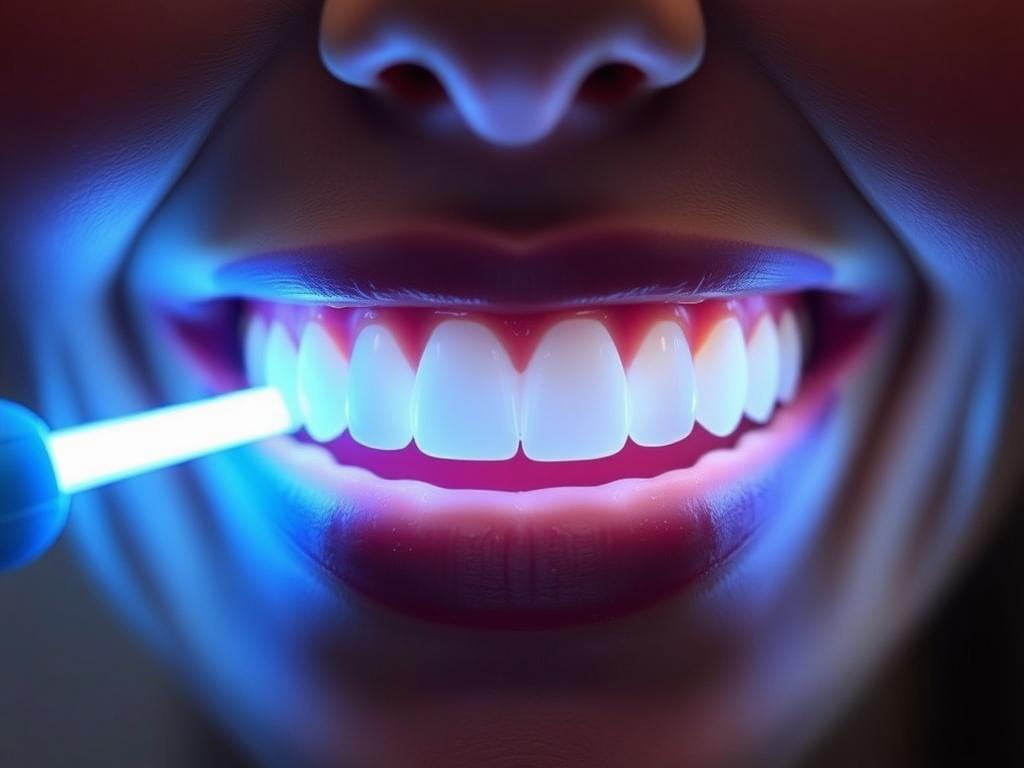
At-home LED teeth whitening kits usually include a mouth tray filled with whitening gel and a portable LED light device that fits into the mouth. Users are instructed to wear the tray with LED light for 10 to 30 minutes daily over several days or weeks.
Here’s how the process typically works:
- Brush and floss teeth to remove surface debris.
- Apply a pea-sized amount of whitening gel into the mouth tray.
- Insert the tray over your teeth and activate the LED light.
- Wear for the directed time, usually 10-30 minutes.
- Remove the tray, rinse mouth, and clean the device.
Many at-home kits boast rapid results, sometimes claiming visible whitening in just a few days. The convenience and lower cost compared to professional whitening make these products appealing. But the key question — do these products live up to their promises?
Effectiveness of At-Home LED Teeth Whitening
The effectiveness depends on several factors: the concentration of the whitening gel, the duration of treatment, and the consistency of use. At-home products typically contain a lower concentration of peroxide than dental office treatments, which means they can take longer to show noticeable results.
Clinical studies indicate that at-home LED teeth whitening can produce moderate improvements in tooth color, especially when used consistently over 1-2 weeks. However, the level of whitening isn’t as dramatic or long-lasting as professional treatments. Users should also be aware that LED lights in consumer products are less powerful than those used by dentists, which might limit their effectiveness.
Professional LED Teeth Whitening: What to Expect
Visiting a dental professional for LED whitening involves a more controlled process. The dentist will first assess your oral health and determine your suitability for whitening. If approved, they will apply a stronger peroxide gel to your teeth and then activate an LED light source for a set period.
Professional treatments often yield faster and more noticeable results. The whitening gel concentrations can be much higher, sometimes up to 40% hydrogen peroxide, and the process is monitored to minimize sensitivity and ensure even coverage.
Advantages of Professional LED Whitening
| Advantages | Description |
|---|---|
| Stronger Whitening Agents | Professional-grade gels with higher peroxide concentration yield better results. |
| Custom Fit Trays | Dentist-made trays fit your teeth perfectly, improving gel contact and comfort. |
| Supervised Treatment | Ensures safety and addresses sensitivity issues promptly. |
| Faster Results | Often noticeable after a single session. |
Patients often appreciate the professionalism, faster timeframe, and greater predictability of outcomes when opting for professional LED whitening.
Are There Risks or Side Effects?
Like many cosmetic dental treatments, LED teeth whitening can cause some side effects. The most common is tooth sensitivity during or after treatment. This occurs because peroxide agents temporarily increase the permeability of the enamel, potentially irritating the nerves inside the tooth.
Other minor side effects may include:
- Gum irritation from gel contact
- Uneven whitening if trays do not fit well
- Temporary enamel dryness or chalkiness
Most side effects are temporary and subside within a few days. Using desensitizing toothpaste and following product instructions can minimize discomfort. It’s also important to avoid using LED whitening products excessively, which can increase the risk of damage.
Is LED Teeth Whitening Safe?
Overall, LED whitening is considered safe when products are used as directed. Unlike UV lamps from older whitening methods, LED lights produce minimal heat and don’t emit harmful radiation. The peroxide gels have been tested for oral safety within regulated concentrations.
However, certain groups should avoid whitening without consulting a dentist first:
- Pregnant or breastfeeding women
- Children under 16
- People with untreated dental decay or gum disease
- Individuals with hypersensitive teeth or enamel defects
A dental consultation before starting whitening ensures no underlying issues that could worsen with treatment.
Comparing LED Whitening with Other Teeth Whitening Methods
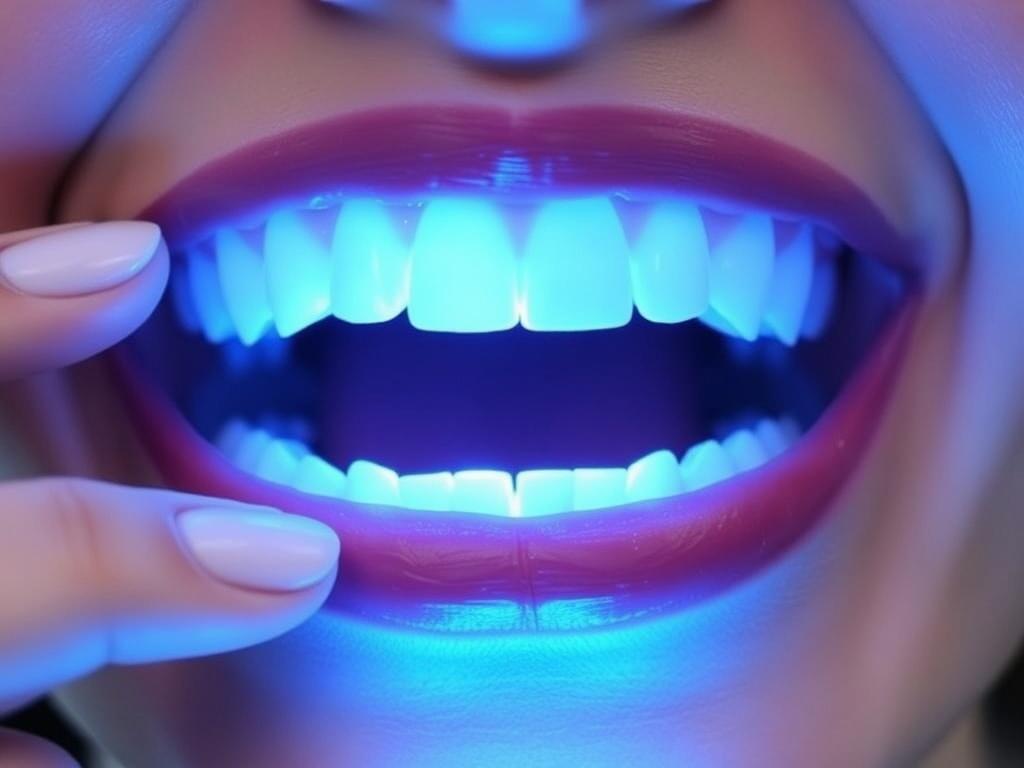
Teeth whitening isn’t limited to LED-based systems. There are several popular alternatives, each with pros and cons. Here’s a quick overview:
| Method | Description | Effectiveness | Cost | Duration |
|---|---|---|---|---|
| LED Teeth Whitening | Peroxide gel activated by LED light, professional or at home | Moderate to high (professional); moderate (home kits) | Moderate to high | Minutes to hours per session |
| Whitening Strips | Adhesive strips containing peroxide gel applied to teeth | Moderate | Low to moderate | Daily for 1-2 weeks |
| Whitening Toothpaste | Abrasive/polishing agents, sometimes mild peroxide | Low | Low | Weeks to months |
| Professional In-Office Whitening (No LED) | High-concentration peroxide gel, possibly light-activated | High | High | One or two sessions |
| Natural Remedies (e.g., baking soda, oil pulling) | Non-chemical methods based on traditional approaches | Low to none | Low | Varies widely |
Each method has its appeal depending on your budget, time, and desired results. LED teeth whitening strikes a balance between at-home convenience and professional-level efficacy, especially when combined with dental supervision.
Tips for Maximizing LED Teeth Whitening Results
If you decide to try LED teeth whitening, here are some tips to help you get the best results:
- Consult Your Dentist First: Ensure your teeth and gums are healthy before starting whitening.
- Follow Instructions Carefully: Overusing or misuse can lead to sensitivity or damage.
- Avoid Staining Foods and Drinks: Limit coffee, tea, wine, and tobacco during and after treatment.
- Maintain Good Oral Hygiene: Brush twice a day and floss regularly to keep teeth clean.
- Use Desensitizing Products: Toothpaste designed for sensitive teeth can reduce discomfort.
- Stay Consistent: Whitening results improve with steady, repeated use over time.
Remember, whitening is a cosmetic process and needs maintenance. Your smile can stay white longer if you adopt good habits and avoid excessive staining factors.
Who Should Consider LED Teeth Whitening?
LED teeth whitening is a great option for individuals who:
- Have mild to moderate surface stains due to diet or lifestyle
- Want faster results than over-the-counter whitening toothpaste
- Prefer a non-invasive cosmetic procedure
- Are looking for a convenient at-home option or more affordable professional care
However, if your teeth have heavy intrinsic stains, such as discoloration from medications or trauma, LED whitening might have limited effect. In such cases, other cosmetic dental treatments like veneers or bonding may be more appropriate.
Common Misconceptions about LED Teeth Whitening
There are several myths about LED whitening circulating online:
- LED light alone whitens teeth: The light simply accelerates gel effectiveness; it doesn’t bleach teeth by itself.
- More light or longer sessions yield better results: Overuse can increase sensitivity without improving outcomes.
- It’s harmful to enamel: When used as directed, LED whitening is safe and does not damage enamel.
- Immediate results happen after one treatment: Whitening is usually gradual and requires multiple sessions.
Understanding these facts can help set realistic expectations and encourage safe use.
Cost of LED Teeth Whitening: Is It Worth It?
The price range for LED whitening varies widely, influenced by whether you choose professional or at-home options:
| Option | Typical Cost | Notes |
|---|---|---|
| Professional In-Office LED Whitening | $300 – $800 per session | Often includes consultation & follow-ups |
| At-Home LED Whitening Kits | $30 – $150 per kit | Variable quality, can be reused |
| Whitening Strips | $20 – $50 per box | Effective but no light activation |
For many, LED whitening offers good value by shortening the whitening time compared to strips or toothpaste. However, the expenses can add up with repeated professional visits or buying multiple home kits.
Final Thoughts: Does LED Teeth Whitening Work?
LED teeth whitening certainly works to an extent, with the peroxide gel being the main agent responsible for breaking down stains. The LED light acts as an accelerator, making the process faster and more efficient, especially in professional settings. At-home LED whitening kits can produce noticeable improvements if used consistently over time, although results tend to be less dramatic than professional treatments. Safety is robust when used properly, and side effects like sensitivity are usually manageable. For those seeking a convenient and effective way to brighten their smile, LED teeth whitening can be a worthwhile option, but it’s important to have realistic expectations and prioritize dental health. As with any cosmetic procedure, consulting with a dental professional is highly recommended to ensure you choose the best and safest whitening option for your individual needs.

